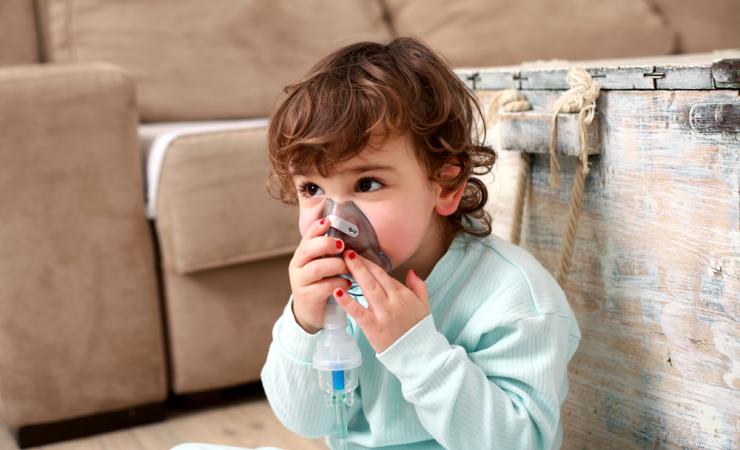Asthma researchers have believed for some time that the community of microbes living in a person’s body (the microbiota) could be linked to asthma or wheezing. Profiling the microbiota could help researchers better understand the link between a person’s body, their microbiome, the environment and the disease.
This was the goal of the IMI-funded project U-BIOPRED, explains Mahmoud I. Abdel-Aziz of Amsterdam University Medical Centers. The project took samples of sputum (mucus and phlegm) from adults with severe asthma to reveal links between sputum microbiota profiles, asthma severity and underlying inflammatory status.
“We found that the microbiome profiles in the sputum could serve as a signature that reflects the severity and inflammatory patterns of asthma,” said Mahmoud.
In a recent paper published in the American Journal of Respiratory and Critical Care Medicine, the researchers turned their attention to revealing these types of links in childhood asthma or wheezing.
Getting samples
But getting sputum samples from young children is difficult. When collecting lower airway samples from adults the researchers could rely on several techniques; one method involves passing a bronchoscope through their mouth or nose into their airway to collect samples.
Using the same techniques to collect sputum samples from children with asthma or wheezing would be extremely difficult. Instead, they relied on swabbing the back of their throats to collect sputum.
Collecting samples this way was a risk, says Mahmoud. “Before conducting this study, we were not yet sure whether the microbiome coming from throat swabs could also reflect the disease severity,” he said. “The evidence was a bit limited.”
They sampled 131 preschool-age children diagnosed with wheezing and 140 school-age children with asthma. Symptoms in both groups ranged from mild to severe. The paper’s authors then used a technique called 16S ribosomal RNA gene sequencing to identify and compare bacteria from these swabs. Further analysis then grouped these bacteria into four main clusters.
Meanwhile they periodically checked on the swabbed children for the next 12–18 months, to see how often their symptoms got worse. This allowed them to find a link between bacterial clusters and how their condition progressed.
Changing classification
However they knew that simply trying to directly link the patient’s throat microbiome to the severity of their symptoms may not work due to the heterogeneity of the severe asthma disease. In a previous study, they did exactly this but found that the difference was modest. Severe asthma is rather an umbrella term for different clinical manifestations with different underlying causes. “We need to look at the underlying biology, to better understand the severe asthma disease”, said Mahmoud.
In this study they changed their strategy. Instead they subtyped (i.e. grouped) the children with asthma or wheezing based on their underlying microbiome composition. They found four groups of children with distinct throat microbiome profiles and these groups were linked to allergies, and how their lungs functioned. In addition, these groups could serve as a predictor on risk of ‘future’ lung attacks.
This, explains Mahmoud, could help clinicians to define subgroups among children with asthma or wheezing so they could monitor them more closely or provide personalised treatment options. He adds that sampling younger people before they show symptoms could mean that patients get treated even earlier and in a timely manner.
The paper also suggests that the medical community should consider reclassifying ‘young’ and ‘adult’ types of asthma besides relying on predefined labels of asthma severity.
“I think that age is a very important player in defining the microbiome,” said Mahmoud. “However, most studies that found age to be a big influence on the microbiome have been done in a relatively young age group.”
Looking at the microbiome profiles at different ages may help determine who could develop severe asthma in later life. “These additional biomarkers, including the microbiome from the airway could help us look at the disease from a different angle.”
The project lives on
One of the most remarkable results of the U-BIOPRED project is that the researchers have continued to collaborate since the project ended in 2015. Mahmoud says that this is down to involving patients as collaborators in the project, which in turn provided the researchers with inspiration and motivation for further collaborations.
In total more than 100 articles related to the project have been published. Mahmoud says that through these articles the project has helped other asthma researchers by shaping how they conduct their work.
“I can see that the improvement of not only the research, but also how can we implement these findings in clinical practice has vastly improved within the last decade,” says Mahmoud. “This was indeed partly due to the efforts of the U-BIOPRED project.”
U-BIOPRED was supported by the Innovative Medicines Initiative, a partnership between the European Union and the European pharmaceutical industry.
